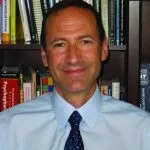Home » Alfred Kinsey and the DSM
Alfred Kinsey and the DSM
December 1, 2004
From The Carlat Psychiatry Report
Daniel Carlat, MD
Dr. Carlat has disclosed that he has no significant relationships with or financial interests in any commercial companies pertaining to this educational activity.
If you've seen the new movie “Kinsey,” you already know that the famed sex researcher first made his name writing about the decidedly un-sexy topic of gall wasps. He was fascinated by these creatures because of the marked variability among individuals--a theme that later emerges in his work on human sexuality. In his detailed interviews, he and his assistants were scrupulously nonjudgmental, and he was able to elicit information about a wide variety of sexual behaviors that had never been written about in this culture. But it wasn't just the diversity of the behavior that struck people; his best-selling publications, Sexual Behavior in the Human Male and Sexual Behavior in the Human Female, also helped people see that behaviors that they may have been ashamed of were actually much more common than they might have thought. He reported that 92% of the men in his study and 62% of the women had masturbated, and that 37% of the men had had some form of homosexual experience. Half the men had had extramarital sex, and half the women had had premarital sex. Perhaps his most influential finding was that 10% of the men he interviewed considered themselves predominantly homosexual. Though this figure is now considered to be an overestimate because of sampling bias, it was important enough to lead psychologist Evelyn Hooker to study the Rohrshach tests of welladjusted homosexual and heterosexual men, and to report in 1957 that there was no evidence that the homosexuals were any more disturbed or ill than the heterosexuals. These two findings likely provided the impetus for the APA, after heated debate, to remove homosexuality as a DSM diagnosis in 1973.
Sources: Kinsey (film); http://www.latimes.com/news/science/la-hekinsey15nov15,0,1597069. story?coll=la-news-science
General PsychiatrySources: Kinsey (film); http://www.latimes.com/news/science/la-hekinsey15nov15,0,1597069. story?coll=la-news-science

Issue Date: December 1, 2004
Table Of Contents
Recommended
Newsletters
Please see our Terms and Conditions, Privacy Policy, Subscription Agreement, Use of Cookies, and Hardware/Software Requirements to view our website.
© 2026 Carlat Publishing, LLC and Affiliates, All Rights Reserved.


_-The-Breakthrough-Antipsychotic-That-Could-Change-Everything.webp?t=1729528747)



